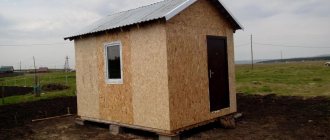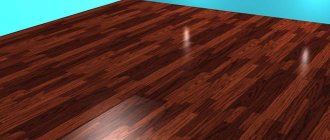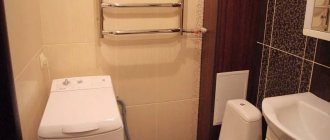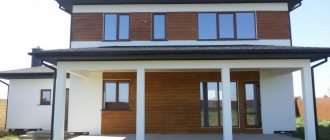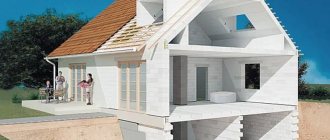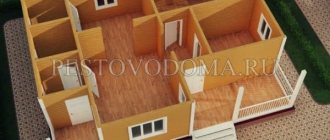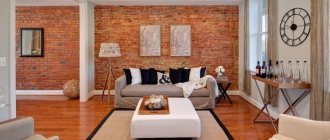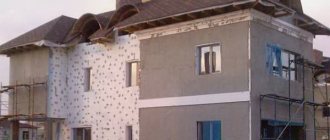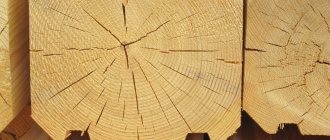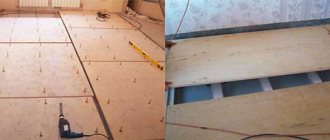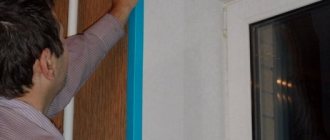This article will discuss the most popular materials for flooring on a terrace, including tiles, boards, concrete, linoleum, etc. We will talk about the correct painting of the flooring for an outdoor terrace, as well as the choice of paint type.
You will find out what the main differences are between different types of materials, and choose the best solution specifically for your terrace.
Features of floors on terraces
The covering for an outdoor terrace is different from that at home. This difference largely depends on the influence of precipitation, wind, and so on. Among these adverse effects, the strongest can be identified:
- Harmful insects. Since they have full access to the wood, they can freely damage the material. It is destroyed by larvae due to the fact that they create holes inside. In addition to the larvae, rodents that gnaw holes in trees can also cause harm.
- Humidity from precipitation. Rain, snow, and morning dew fall into the tree, which can cause it to begin to rot and collapse.
- Temperature changes. Since the site is located in an open area, the wood can either expand or contract due to the fact that the temperature varies greatly throughout the day and year. The material can still be destroyed because water gets into the cracks, and with the onset of frost it freezes, turning into ice. Because of this, the tree expands and deteriorates.
- Mold. Since outdoor conditions are favorable for the spread of fungi, they can grow quickly.
- Sun. If the paint color is chosen incorrectly, the sun's rays will cause the floor to fade and become uneven.
It is important to know how to paint the floor on an open veranda so that it can last a long time. These factors should be taken into account when choosing paint.
Waterproofing rules
The essence of the process: cutting off the screed or heat insulation from moisture. A layer of waterproofing is laid. The materials used are roofing felt, glassine, and special membranes. They are laid from below, under screed or insulation.
Waterproofing is carried out when installing the subfloor. The insulator layer must be airtight, so the installation is done overlapping, and the joints are taped with construction tape. If we are dealing with wooden flooring on a joist system, then waterproofing is only needed at the points where the wood comes into contact with the foundation.
To summarize, we note that there are enough materials for arranging the floor. Which one to choose depends on the features of the veranda, budget and expected result. The classic option is wooden flooring, modern and simple is rubber coating, complex but durable is self-leveling flooring.
Types of paints and varnishes for terraces
The floor on the open veranda should be lined with a material that meets the following factors:
- UV resistance. This point is especially important not to ignore when the recreation area is without a canopy. The sun reduces color saturation. Therefore, the coating must have good protection against such rays.
- Resistance to severe frosts. To understand that the selected material has this property, you need to pay attention to the water absorption rate. If the figure is up to 3%, then the coverage corresponds to this factor. Using it, the floor will not absorb moisture, which means it will not deform or rot.
- Resistance to moisture. The floor will be affected by precipitation. Therefore, you need to use one that does not deteriorate from moisture, does not rot or deform from it.
- Abrasion resistance. Coatings are divided into classes according to the degree of abrasion. For terraces, a minimum of IV is recommended. It is better not to use below, because this item directly affects the appearance of the floor and its durability.
- Non-slip surface. This factor is important for the safety of guests and hosts. This indicator will come in handy especially during rains and ice.
- Durability of the coating. In any case, the floor must be more durable than the coating in the house. Otherwise, after a couple of years it will need to be replaced.
There is a variety of materials that meet these indicators. Among them are the following:
- Stone slabs;
- Wood boards;
- Ceramic coating: tiles, porcelain stoneware, clinker;
- Stamped concrete;
- Concrete slabs and tiles.
No. 5. Stone tiles
Thanks to the use of stone slabs, the adjacent area is harmoniously combined with the terrace. If the terrace is a raised reinforced concrete slab, the facing tiles can be thin, no more than 1-2 mm in thickness. You can also finish the terrace on the ground, but the slabs should be larger, about 3-6 mm. In this case, laying is done on a sand or crushed stone bed.
Stone slabs for terrace cladding
pros
- attractive appearance;
- beautiful aging, the color of the material does not change due to abrasion;
- long service life.
Minuses
- ease of contamination of seams;
- strong heating of the stone in hot weather;
- possibility of cracks appearing upon impact.
Natural stone tiles
When choosing stone tiles, be sure to inquire about their level of abrasion and moisture resistance. The most stable rocks are granite, shale, and basalt. If the terrace is covered, preference can be given to limestone or sandstone.
Yacht varnishes
This coating is recommended for use exclusively in open areas, because the composition includes toluene and xylene. Inside the house it is highly toxic, but in the fresh air such dangerous substances evaporate. This varnish helps wooden products last even longer. It needs to be updated every five years. This feature allows you to save time, effort and money on annual reconstruction.
Among the positive properties of this coating are deep penetration into wood, a high level of stability, and the ability to counteract sun and ultraviolet irradiation. In addition, after drying, the varnish can repel not only water, but also dirt. Due to the fact that the sun cannot significantly damage the coating, the color remains saturated longer. And due to its transparent structure, the varnish only emphasizes the natural texture and shade of the wood.
Yacht varnishes are divided into several varieties:
- Acrylate - the positive side is its environmental friendliness. But, despite its high price, it does not have great resistance to adverse external factors.
- Alkyd-urethane - valued for its minimal drying time, but, unfortunately, it contains very toxic substances.
- Alkyd - has a low price, but compared to other types it is the most toxic.
- Urethane-alkyd - valued due to the low evaporation of harmful substances. This figure was achieved thanks to some components that inhibit the release of toxins into the air. It can even be used inside the home. It is resistant to temperature changes and floor deformation.
It is recommended to hire a professional to coat the floor surface with this product. Otherwise, an inexperienced person, even in the open air, can be poisoned by dangerous substances.
The work should be carried out starting with dismantling the boards for further sanding using sandpaper. After this, you can apply the decking varnish 2-3 times, waiting 4-5 hours after each.
When working with varnish, it is worth considering that if the wood loses its elasticity due to frost, there will be bad consequences. Yachts, when sailing on a warm sea, are not afraid of such conditions, because they are not there. But for areas with cold winters, it will be better to use varnish a year after installing the tree.
Video description
How to lay clinker, see the following video:
Rubber, linoleum and plastic
These are the most modern materials. Rubber looks like a rubber sheet and is available in the form of a roll or individual slabs that need to be glued. Its main advantage is its high strength and moisture resistance. It is suitable for verandas located near the water.
Linoleum is often used as a covering for verandas and terraces. It is chosen because of the variety of colors, ease of installation, reliability and low cost. However, low-quality material may begin to fade or deteriorate. It is also easy to cut.
Chlorine rubber paint
Continuing the topic of how to cover the floor on the veranda, it’s worth looking at the paint that is used for swimming pools. Therefore, it has properties that protect the coating from water. It can also be used to coat plastic and wooden surfaces. This product is also called enamel. It is highly resistant to temperature changes and moisture. The composition does not contain chromium and lead.
Since the product is almost opaque, it is good for hiding the imperfections of a wooden surface. The paint should be applied twice, using a wide brush, and waiting 8 hours between coats. To achieve the best effect, it is recommended to prime the surface in advance.
Popular forms, markings
When buying tiles in large quantities, pay attention to the characteristics that are printed on top of the package.
It states:
- size;
- thickness;
- form;
- color;
- quantity;
- total weight (sometimes).
Popular shapes:
- rhombus;
- lily;
- coil;
- antique;
- snake;
- rondo cross;
- scales;
- mosaic, etc.
Photo: variety of shapes
There is also an abbreviated classification:
- Ш – hexagonal;
- K – square;
- F – figured;
- P – rectangular;
- D – tiled border;
- ED – decorative elements.
The markings of different manufacturers may not be the same, so it is recommended to check all the details with the seller.
Composition selection
When your floors are properly prepared and treated, they can last for a long time. To decide which terrace flooring to use on your property, you can look at photographs of already treated surfaces. For work you should prepare tools and materials:
- Brushes with rollers;
- Solvent;
- Spatulas;
- Skin;
- Grinding machine;
- A primer that has antiseptic properties;
- Selected flooring material.
To decide how to cover the floor on the terrace, you should consider all the pros and cons of each possible means. Chlorinated rubber paint, or enamel, as it is also called, can protect the surface only indoors. Outside at a temperature of 27o it begins to deteriorate. In outdoor conditions, floorings that have been treated with it will not be able to last more than a season.
In addition to the types of processing already listed, there is also terrace oil. It is used both for covering piers and for terraces. This oil contains several types that are designed for different purposes. When choosing, it is worth considering such points, because some do not use it for boards that are quickly laid.
To preserve the natural look of wood, it is recommended to use stain. This is a high quality impregnation with a varnish surface. To work with this product, you should prepare the wood using waterproof varnish and impregnation.
Also, to preserve the natural grain of the wood, the surface is coated with yacht paint and acrylic compounds. Before the procedure, it is necessary to treat the floor using a glaze or antiseptic primer.
No. 6. Wooden boards
Wood is traditionally used to cover the deck floor. The boards make a warm, attractive and durable coating. In most cases, the boards are laid on logs, although laying on a crushed stone cushion is also possible (if the boards are thick and antiseptic).
If the terrace is open, then the boards should be made of moisture-resistant species (oak, larch, iroko, teak, etc.). They are more dense, and therefore do not rot, are not susceptible to insects, and do not change their original appearance for a long time. Although similar characteristics are imparted to the material artificially - by heat treatment. This is how spruce, birch, pine, beech, and ash boards are processed.
Wooden deck boards
pros
- variety of textures, shades, sizes;
- warm surface;
- environmental friendliness;
- attractive appearance;
- good shock absorption characteristics.
Minuses
- color change under the influence of ultraviolet radiation;
- the need for regular treatment with antifungal agents;
- difficulty of care.
Terrace board
The boards can be either planed (necessarily after fire retardant/antiseptic treatment) and deck (or terrace). The second type is more preferable, because such boards are made from hardwood (as an option, they are heat treated). There is no tongue-and-groove fastening; the elements have rounded edges. When laying, leave a small distance between the boards so that precipitation can flow freely through the cracks. The surface can be either corrugated or smooth.
Larch deck board
On a note! When choosing a floor covering, you don’t have to stop at just one option - if you want, you can combine several paving methods (for example, wood and tiles, clinker and natural stone).
Prices for deck boards
deck board
Preparation for processing
In order for the decking coating to efficiently fulfill its purpose, it is necessary to carefully prepare the surface for processing. Therefore, if it was previously painted, the paint should be removed. For easier work, use SM-1 emulsion.
In addition to paint, wood can also be damaged by sun and moisture. Due to their impact, the floor may turn black and gray. To remove bacteria and various defects, you can use a grinding machine. The work should be carried out until the surface becomes light. If there are boards on the floor that cannot be restored, they will need to be replaced.
Each impregnation has its own subtleties in application. If an antiseptic primer is used for coating, then the floor will need to be coated with this product and wait for the drying time indicated on the package. This work is carried out several times so that the product can be thoroughly absorbed into the wood. After the last layer is applied, you need to wait three days. Only after this period has passed can you proceed to the procedure for applying the main material.
When treating with such protective agents, it is recommended to use decking varnish for further finishing. It is important to read the manufacturer's instructions before applying because the application process may vary.
No. 3. Concrete tiles/slabs
These materials can also be used to pave the terrace area. The base is cement-sand. If we are talking about a raised concrete platform, then the slabs can be fixed with glue for external work. Although it is better to use cement-sand mortar, especially if the slabs are large.
Paving slabs on the terrace
A large area can be easily covered with large concrete slabs in record time. Elements can be square or rectangular. Popular sizes:
- 300x300 mm;
- 600x450 mm;
- 500x500 mm;
- 600x600 mm.
Now the surface of concrete slabs can imitate ceramics or natural stone. Particularly popular is a coating with an original figured surface (for example, with lines that divide a fragment into several “bricks”).
Laying paving slabs
Smaller tiles are available in a larger variety. The shape can be any, as well as the surface.
pros
- high strength;
- ease of repair/dismantling;
- long service life (at least 25-30 years);
- ease of installation;
- a wide range of colors, textures, shapes, dimensions;
- the ability to create various ornaments and patterns.
Minuses
- the need to maintain a slope during installation;
- difficulty of choice;
- slipperiness of the coating in winter;
- uneven settlement (if the base is prepared incorrectly).
Wood-look paving slabs
On a note! Coloring pigments are introduced into concrete, thanks to which the tiles can have different colors.
Tiles can have any color
Coloring
When the preparation procedures are completed, you can begin staining. The work must be done in several steps. There are several nuances that are important to perform when treating the surface on an open terrace so that the work is of high quality.
- The wooden floor on the veranda must be covered in such a way that the brush does not go along the width of the board, but along its length.
- The first layer is applied with maximum shading, so it is thin. You will need to wait 5 days for it to dry well. Some products need to wait up to a week.
- The floor covering for the terrace is applied in 2-3 layers, drying each time.
- The last step is to wash the floors with hot water.
For a longer life of the floor, in addition to high-quality treatment, conscientious care should be performed. Since the open terrace is not used in winter, it is better to cover the floor with plastic film. Mats are placed for safe movement.
Examples of porcelain tile collections for exterior decoration
European manufacturers offer customers fashionable series of high-quality porcelain tiles for outdoor use. We offer you several options that can be included in the list of suitable ones:
- Arizona Concrete by Diesel Living. Porcelain tiles with a stylish imitation of concrete texture and a high anti-slip coefficient, thanks to which installation is possible even in wet areas and humid climates.
- Drops from Wow. Spanish porcelain tiles with a stracciatella pattern attract with their matte surface and design, allowing you to create an elegant home space.
- Allmarble by Marazzi. Italian large-format porcelain tiles with outstanding strength characteristics. To decorate a veranda or balcony, choose a matte option.
- Ardesia by Pamesa. A collection by the Spanish brand for decorating the space around country houses, where stylish minimalism reigns.
- Mystone Ceppo Di Gre by Marazzi. Another collection from the famous Italian brand - with a quartz texture, large format and increased wear resistance.
The best manufacturers
We offer a brief description of the largest and most popular manufacturers of ceramic tiles in Russia.
Keramin
European manufacturing company. It has the largest sales volumes in the ceramics market. Specializes in the production of ceramic bricks, granite, tiles, sanitary ceramics. All Keramin products have registered certificates of conformity, and sanitary ceramics have a certificate of hygienic registration, environmental ISO 14001-2005.
Photo: Keramin tiles
Finished products undergo constant quality control. New equipment has been installed in the workshops, thereby reducing the duration of the technological process and increasing production volumes.
Kerama Marazzi
Domestic manufacturing plant with a wide network of distribution companies. Founded in 1988 in the city of Orel.
Kerama Marazzi produces ceramic tiles and granite, borders, steps, panels, mosaics and other elements. The company's catalog contains over 2000 items.
The quality of products is confirmed by compliance with international, state standards and requirements, and expert opinions. The Marazzi factory also produces many thematic collections of ceramics. Applications for individual orders are accepted.
Stone Age
Russian manufacturing plant. It has been producing paving slabs for more than 12 years. In 2012, the entire production line was re-equipped to European standards. The ColorMix system was introduced to make an analogue of imported clinker. Models of floor slabs with granite, quartz, and basalt chips have been added.
Gothic
Domestic tile manufacturer. The factory was founded in 2005. “Gothic” products are often called mosplite, since many iconic places in Moscow are paved with it (Alexandrovsky Garden, Old Arbat). German HESS equipment is installed in the workshops. The tiles are created using the semi-dry vibration pressing method. Manufactured products are divided into PREMIUM and PROFI classes. The first has a high cost and imitates natural stone in appearance, the second is standard sidewalk tiles in different colors.
Laying technology
You need to start laying the tile covering after the work site is cleared of vegetation, debris and leveled. The prepared area looks like a reinforced concrete slab with a neat screed on the surface.
The elements are fixed to each other using adhesive solutions that have high elasticity. It is recommended to fill the gaps with purified sand or use polyurethane sealant.
The width of the seams between the tiles should be on average 2% of the length of the sides of the material. The minimum angle of inclination of the terrace from the wall of the house is 30.
Subject to the installation technology, the tiled surface should be a continuous carpet with a pattern.
